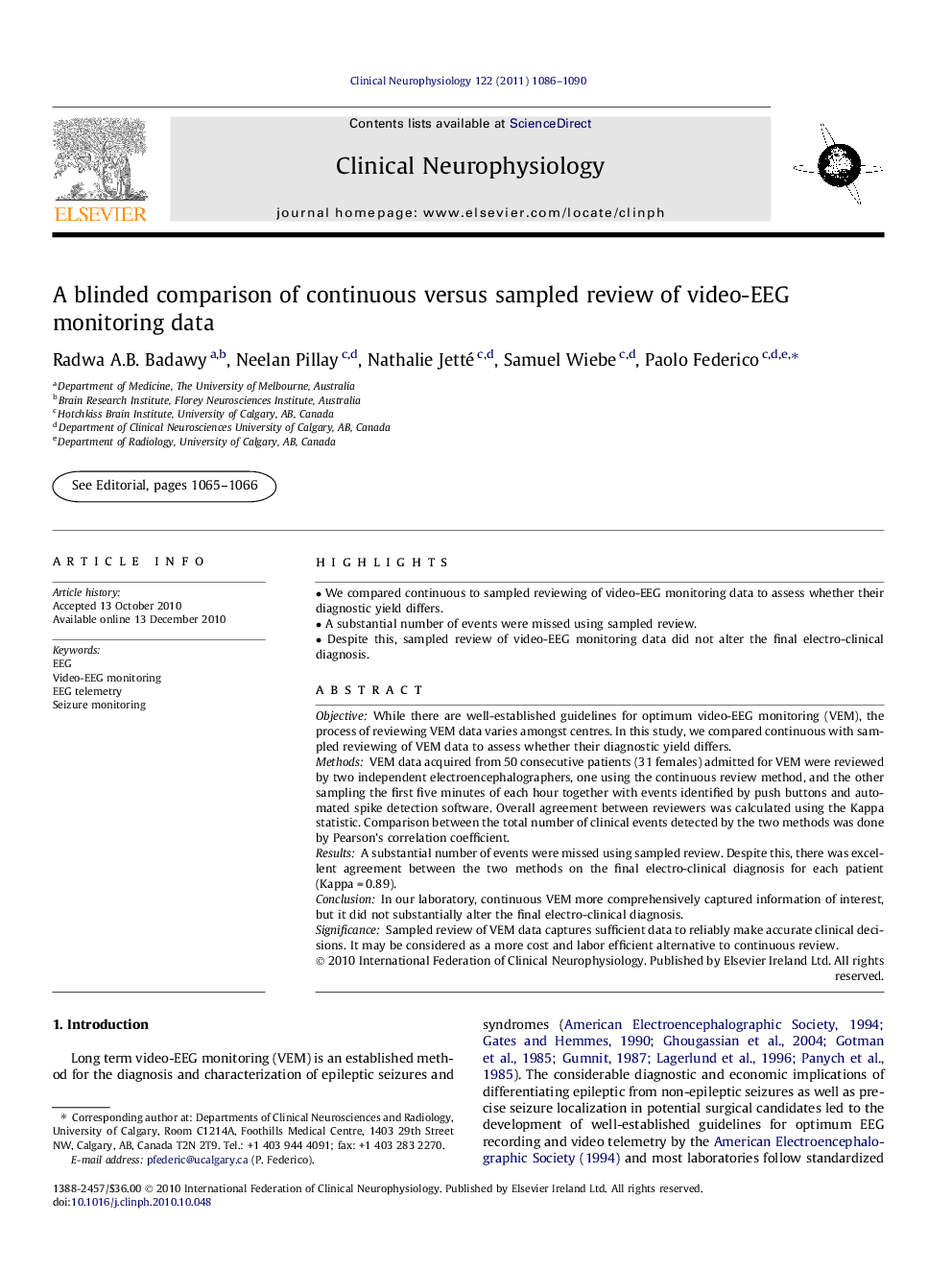| Article ID | Journal | Published Year | Pages | File Type |
|---|---|---|---|---|
| 3044289 | Clinical Neurophysiology | 2011 | 5 Pages |
ObjectiveWhile there are well-established guidelines for optimum video-EEG monitoring (VEM), the process of reviewing VEM data varies amongst centres. In this study, we compared continuous with sampled reviewing of VEM data to assess whether their diagnostic yield differs.MethodsVEM data acquired from 50 consecutive patients (31 females) admitted for VEM were reviewed by two independent electroencephalographers, one using the continuous review method, and the other sampling the first five minutes of each hour together with events identified by push buttons and automated spike detection software. Overall agreement between reviewers was calculated using the Kappa statistic. Comparison between the total number of clinical events detected by the two methods was done by Pearson’s correlation coefficient.ResultsA substantial number of events were missed using sampled review. Despite this, there was excellent agreement between the two methods on the final electro-clinical diagnosis for each patient (Kappa = 0.89).ConclusionIn our laboratory, continuous VEM more comprehensively captured information of interest, but it did not substantially alter the final electro-clinical diagnosis.SignificanceSampled review of VEM data captures sufficient data to reliably make accurate clinical decisions. It may be considered as a more cost and labor efficient alternative to continuous review.
► We compared continuous to sampled reviewing of video-EEG monitoring data to assess whether their diagnostic yield differs. ► A substantial number of events were missed using sampled review. ► Despite this, sampled review of video-EEG monitoring data did not alter the final electro-clinical diagnosis.
